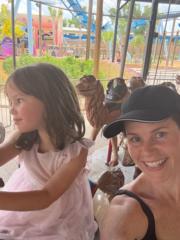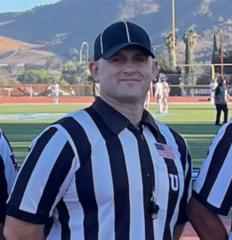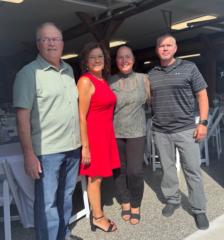10d • Article Series
The Hidden Switch: Why Long COVID Lingers and How to Restart the System Part 4
One of the least appreciated but most critical aspects of long COVID is endothelial dysfunction. The endothelium lines every blood vessel, acting as a dynamic interface between blood and tissue. In healthy states, it regulates vascular tone, prevents clot formation, and coordinates nutrient delivery. In long haulers, endothelial cells remain injured and inflamed, leading to microclot formation, impaired oxygen delivery, and disrupted autonomic signaling. This explains why so many symptoms—from shortness of breath to brain fog to rapid heart rate—can be traced back to vascular chaos.
Microclots are a defining feature. These are not the large clots that cause strokes or pulmonary emboli but tiny fibrin-rich clots resistant to normal breakdown. They trap proteins, inflammatory molecules, and even spike fragments, acting as persistent irritants in the circulation. By blocking capillary beds, they reduce oxygen delivery to tissues, creating hypoxia at the cellular level. This is one reason why long haulers feel exhausted after the smallest activity the oxygen never fully reaches their mitochondria. It is like trying to water a field with hoses full of pebbles: the flow trickles instead of streaming.
Nitric oxide signaling is another casualty. Endothelial nitric oxide synthase normally produces NO to dilate vessels, improve blood flow, and support mitochondrial function. Oxidative stress, arginine depletion, and enzyme uncoupling reduce NO production in long COVID. Without it, vessels remain constricted, blood flow is irregular, and energy metabolism suffers. VEGF, the growth factor that directs vascular repair and new vessel formation, also becomes dysregulated, either underactive in some tissues or overactive in others, producing fragile and leaky capillaries. Together, this creates a vascular network full of potholes and detours instead of smooth highways.
Autonomic dysfunction sits on top of this vascular instability. The autonomic nervous system depends on precise baroreceptor feedback from blood vessels to regulate heart rate and blood pressure. When endothelium and fascia baroreceptors are injured, the signals become erratic. The vagus nerve often loses tone, while sympathetic activity ramps up. The result is postural orthostatic tachycardia syndrome, dizziness, palpitations, and poor heart rate variability. Many long haulers describe it as their body “forgetting how to regulate itself.” In truth, the sensors and wiring have been damaged by inflammation and microclots.
Fascia hydration adds another layer. Connective tissue not only transmits mechanical force but also houses baroreceptors and regulates interstitial fluid flow. When fascia becomes stiff and dehydrated after spike protein exposure, proton conductivity and mechanical signaling to the autonomic system are disrupted. This magnifies the sense of dysautonomia, as if the body’s gyroscope has been thrown off balance.
Repairing this domino requires both biochemical and mechanical interventions. On the biochemical side, compounds like BPC-157 promote angiogenesis and endothelial healing. Plasmalogens strengthen membrane integrity and reduce lipid oxidation. Arginine and citrulline can restore NO production, while sulforaphane activates NRF2 to reduce oxidative stress and enhance vascular resilience. Omega-3s and pro-resolving mediators help clear microclots by shifting the balance toward resolution rather than ongoing coagulation. On the mechanical side, HRV biofeedback, paced breathing, vagus nerve stimulation, and graded recumbent exercise can retrain autonomic circuits. Hydration strategies and fascia release work restore fluid dynamics and improve baroreceptor function.
The analogy here is simple: the vascular system in long COVID is like a city’s highway network full of potholes, broken traffic lights, and clogged tunnels. Cars can still move, but traffic jams appear constantly, detours slow progress, and accidents pile up. To fix the city, you don’t just add more cars you repair the roads, reset the signals, and clear the debris. Only then can flow return to normal.
Recognizing the vascular and autonomic dimensions of long COVID transforms our understanding of symptoms. The racing heart, the breathlessness, the brain fog, and the fatigue are not random they are the predictable outcome of endothelial injury and autonomic miscalibration. Once these hidden drivers are addressed, patients often notice rapid improvements in tolerance and stability. And without repairing this layer, no amount of mitochondrial or immune support will fully resolve the syndrome.
9
3 comments

skool.com/castore-built-to-adapt-7414
Where science meets results. Learn peptides, training, recovery & more. No ego, no fluff—just smarter bodies, better minds, built to adapt.
Powered by





